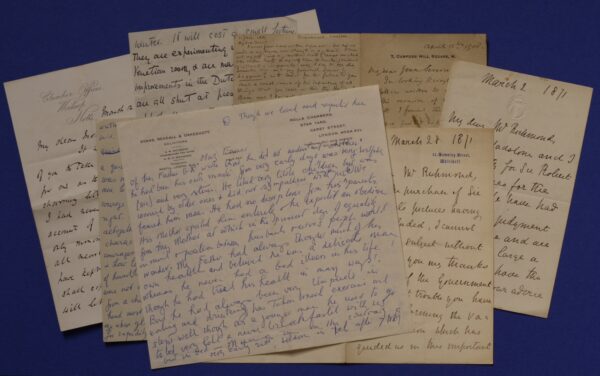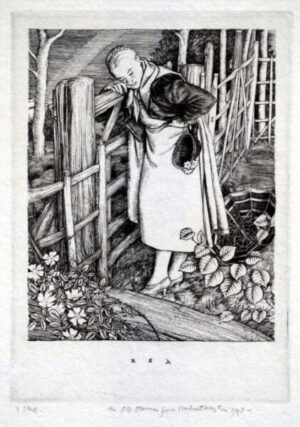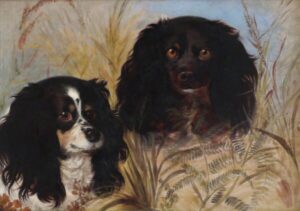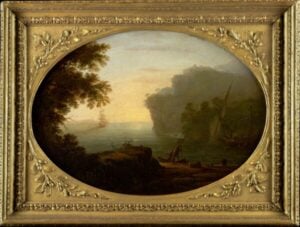Description
1. Mary Farrer (née Richmond) daughter of G.R. A very interesting letter in which Mary describes her father’s character. Date unknown.
2. John Richmond to Joan Severn (wife of Arthur Severn – cousin and heir of John Ruskin). Dated 15 April 1900. Richmond writes to inform Joan of an intimate letter he found from John Ruskin to G.R., dated 11 January 1881, and includes a copy of the wording to her for possible publication in John Ruskin’s biography.
3. Robert Lowe, 1st Viscount Sherbrooke, (Chancellor of the Exchequer 1868-1873) to George Richmond., R.A. Requesting advice from G.R. on a collection of pictures left in treaty to Gladstone and Lowe. Dated 2 March 1871.
4. Robert Lowe, 1st Viscount Sherbrooke, (Chancellor of the Exchequer 1868-1873) to George Richmond., R.A. Thanking G.R. on behalf of the Government for his help in purchasing, Sir Robert Peel’s paintings. Dated 28 March 1871.
5. Walter Coleridge Richmond to his Mother. Writing about his parent’s marriage, horses and farming. Dated 12 March 1878.
6. Anthony Walter Richmond to Walter Coleridge Richmond. Writing about his father’s birthday and experiments with electric lights at the National Gallery. Dated 16 December 1930.
7. Ernest Tatham Richmond. Writing affectionately about his brother, John Sebastian Richmond (1876-1895) and Mary Farrer (née Richmond) Daughter of G.R. Date unknown.
Brand
Richmond, George (1809-1896)
George Richmond was born to Thomas and Ann Richmond on the 28th March 1809. A natural facility for draftsmanship revealed itself at an early age. He is one of the youngest students ever to have been admitted to the Royal Academy schools. The Academy permanent collection holds drawings made by Richmond while studying in the school of the Antique.
In 1825 he met William Blake and, along with Samuel Palmer and fellow student Edward Calvert, became devoted to the aging artist. The young men would come to refer to themselves as the Ancients. The group followed the artistic principles of Blake and worked to ideals inspired by renaissance painters, particularly Michelangelo and Dürer. The party retired to Palmer's country home at Shoreham during the late 1820's, residing together and developing their aesthetic theory. They lived simply and worked hard.
In 1831 Richmond married Julia Tatham, daughter of Charles Heathcote Tatham. The marriage was immediately central to his life and they were to have thirteen children, ten of whom survived into adulthood. The necessities resulting from such a large family compelled Richmond to change direction artistically. It was impossible to follow the eclectic road taken by the Ancients and feed all the hungry mouths. The ramifications of this situation remained with Richmond for the rest of his professional life.
Richmond was an extremely religious young man. His beliefs chimed with the growth of evangelical devotion and he found a fellow communion among the members of the "Clapham Sect". Sir Robert Inglis was an early supporter of Richmond, and benefactor to the children of Henry Thornton, one of the founders of the Clapham group. It was through Inglis that Richmond received an important commission in 1832. Richmond landed a coup in painting the great emancipator, William Wilberforce. The positive public response to this portrait established Richmond, almost overnight, with a successful portrait practice.
From the early 1830's portrait painting became Richmond's primary source of income. By the late 1830's his financial security was such that he could afford to travel to Italy with his young family and that of Samuel Palmer. Richmond's experiences in Italy are recorded in his journals, which comprise part of this archive.
Richmond rarely left Britain after a second journey to Rome in 1840-1841. He worked hard over the next forty years, painting around 2500 of the most prominent figures of Victorian society. His learning in art practice and art history led him to be considered one of the country's foremost experts on painting restoration. This discipline took on more importance for him as his energies for portrait work flagged in the 1870's and 1880's. His residence, Porch House, in Potterne, Wiltshire, was regarded as a model of sensitive architectural restoration. He declined the position of director of the National Gallery at least once, citing ill health. Health was a perennial concern of this long-lived hypochondriac.
Julia Richmond died in 1881 and from this point Richmond entered the last, relatively secluded phase of his life. His closeness to the survivors of the Thornton clan is particularly evident towards the close of his life. Richmond died in 19th March 1896; having seen his son William Blake Richmond elected a Royal Academician the year before.



